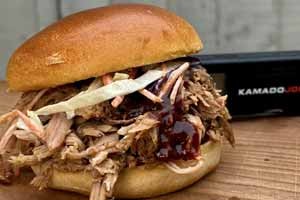Easy, tender BBQ pulled pork, loaded into buns with coleslaw and BBQ sauce.
How to Tell if Pork is Cooked
Pork doneness is a bit of a controversial topic. UK food guidelines are clear — it should be well done all the way. But with medium-rare pork popping up in restaurants and on TV shows, the rules can be confusing.
Like you, we just want to enjoy juicy, tender meat whilst also feeling confident that it's safe to eat. So, we dug into the guidelines from food safety professionals and the advice from chefs to find out how we can do that.
What temperature is pork when cooked?
The Food Standards Agency (FSA) is the UK body responsible for ensuring food safety throughout the country. They recommend heating pork to 70 °C for two minutes. This temperature ensures that all harmful bacteria are destroyed and the pork is safe to eat.
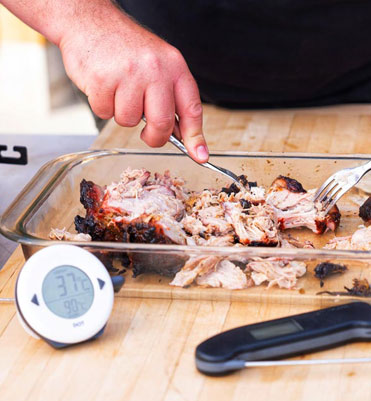
Can you eat pork medium rare?
Many people enjoy eating some cuts, like pork tenderloin and chops, cooked medium (the temperature for medium pork is 63 °C). A study by the University of Illinois found that consumers find chops cooked to 63 °C far tastier, juicier, and more tender than those cooked to 71 °C.
But is it safe? In 2011, the UDSA (the body for food safety in the United States), lowered their recommended pork temperature from 72 °C to 63 °C due to improved farming practices. The guidelines stipulate that cooks should also rest pork for three minutes, in which time the meat will rise by a further few degrees.
However, the UK continues to stand firm at 70 °C.
As with many foods, such as ground beef burgers and duck breasts, there is a risk involved with cooking meat to a lower temperature, especially for vulnerable people. But some people are happy to take this risk for a more juicy and delicious food experience.
It's essential, however, to always cook ground pork and rolled joints to an internal temperature of 70 °C. Due to their preparation, there is an increased risk of harmful bacteria being distributed throughout the meat.
Can pork be pink?
Safely cooked pork can look pink. Colour is not a reliable way to tell if pork is properly cooked; temperature is. You should always use a meat thermometer to ensure it has reached the safe temperature for pork — 70 °C in the UK.
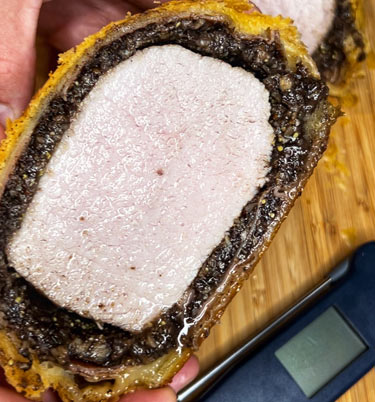
What do the experts recommend?
Natalie Stanton, Chartered Environmental Health Officer and founder of online training platform The Safety Expert says: "To prevent illness, consumers should follow advice from the FSA. There have been incidences where there's been a link between Hepatitis E and pork products. The only way to reduce the risk of illness from harmful bacteria such as hepatitis E is to thoroughly cook pork and pork products."
Contrastingly, UK-based Scientist and medical writer Dr Stuart Farrimond writes in his book The Science of Cooking: 'Improved feeding practices mean that most experts believe slightly pink, cooked pork is safe to eat.' He lists the safe cooked temperature for pork as 62 °C.
Another supporter of medium pork is Great British Chefs, an online platform that celebrates the best of British cuisine. They recommend cooking pork to a minimum of 63 °C. Although, they say that 'it is more common to see pork cooked all the way through, but still moist.'
How cooking temperatures make meat safe
All meat has a risk of carrying a range of harmful bacteria, which can cause food poisoning. It differs depending on the type of meat, and while it's possible that they contain a certain type of bacteria, it doesn't mean they definitely do. For example, a study in 2001 found that 50% of UK supermarket chickens contain campylobacter and 5.7% contain salmonella.
The risk is also impacted by the way the animal is kept, fed and handled when it's butchered. But this doesn't mean you can guarantee that meat doesn't contain certain pathogens just because it's better quality.
Science shows that holding bacteria at a certain temperature for a specific length of time renders it inactive. This varies slightly depending on the type of bacteria. For example, you can hold chicken at 70 °C for two minutes or 75 °C for 30 seconds, and either option will make it safe to eat.
Using a digital thermometer is, therefore, far safer and easier than relying on cooking times or visual indicators.
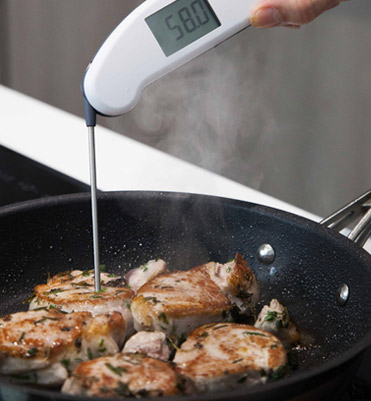
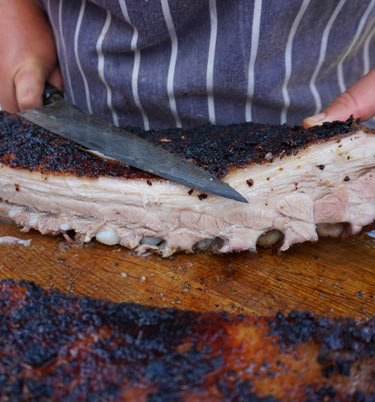
Slow-cooked pork temperature
Unlike leaner cuts of pork, which are juiciest when cooked to the lowest safe temperature possible, fatty cuts are best taken to much higher temperatures.
Pork shoulder, belly, and ribs are the cuts to cook low and slow. These dishes need to reach a higher internal temperature to break down the connective tissues and create the buttery soft texture they're loved for. We recommend heating slow-cooked meats up to 93-95 °C to ensure they're melt-in-the-mouth.
The Takeaway
Food safety advice on cooked pork is a little conflicting, but to be completely safe, UK cooks should heat pork to 70 °C. This is in line with official UK guidelines.
However, some experts, as well as the UDSA, claim that pork is safe at 63 °C. And because medium-cooked pork comes out on top for taste, texture and flavour, many people enjoy serving it cooked to this temperature.
Vulnerable people should be more cautious when cooking pork under 70 °C due to increased risks. Ground meat and rolled joints should always be cooked to 70 °C to ensure they're safe to eat.
Fatty cuts like pork shoulder and belly are best cooked slowly to a higher temperature of 93-95 °C. This allows the connective tissues to break down, producing a more tender result.
Whichever way you decide to cook your pork, using a reliable meat thermometer like a Thermapen will give you the confidence to know it's done perfectly to your liking.
Related posts
 How to Cook Christmas Turkey on a BBQ
How to Cook Christmas Turkey on a BBQ
 5 Best Cooking Christmas Gifts 2025
5 Best Cooking Christmas Gifts 2025
 Mike Tomkins' Ultimate Beef Wellington
Mike Tomkins' Ultimate Beef Wellington
 Christmas Marmalade Glazed Gammon
Christmas Marmalade Glazed Gammon
 How Long to Rest a Turkey
How Long to Rest a Turkey
Search
Categories
- Baking (35)
- BBQ (85)
- Autumn (14)
- Cheap Eats (9)
- Sweet Treats (38)
- Tips, Advice & Info (78)
- Christmas (36)
- Drinks (2)
- Thermapen Father's Day Recipes (18)
- Team Temperature (28)
- Date Night (37)
- Celebrations (20)
- Family & Kids (10)
- Fish (21)
- Low & Slow (13)
- Meat (142) click
-
Chefs (132)
click
- Kenny Tutt (16)
- Richard Holden (16)
- Barbechoo (7)
- Only Slaggin (1)
- SoSaSe Chocolat (1)
- Genevieve Taylor (5)
- Becky Excell (2)
- Charlotte Stirling-Reed (3)
- The Smokin Elk (13)
- Marcus Bawdon (2)
- Thermapen Chef (25)
- Edd Kimber (2)
- Humble Plates (7)
- Simon May (4)
- The Hedgecombers (3)
- Billy & Jack (4)
- Perfectly Preserved (3)
- Mike Tomkins (20)
- DJ BBQ (2)
- Nick Nairn (4)
- BBQ Jake (1)
- Air Fryer (9)
- RFX (6)
Latest recipes

Rotisserie-cooked chicken shawarma, coated in a punchy yoghurt marinade. Pile into flatbreads with salad
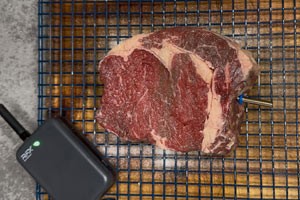
Ribeye is an amazing, flavour-packed cut of beef. Learn how to cook ribeye steak medium rare using the reverse sear...

Elky Whittaker, aka The Smokin’ Elk, began barbecuing as a hobby 10 years ago. Today, he has 262k Instagram followers...
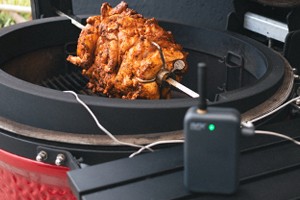
Juicy BBQ chicken shawarma recipe with homemade flatbreads and garlic sauce.
Archive
Popular Recipes
